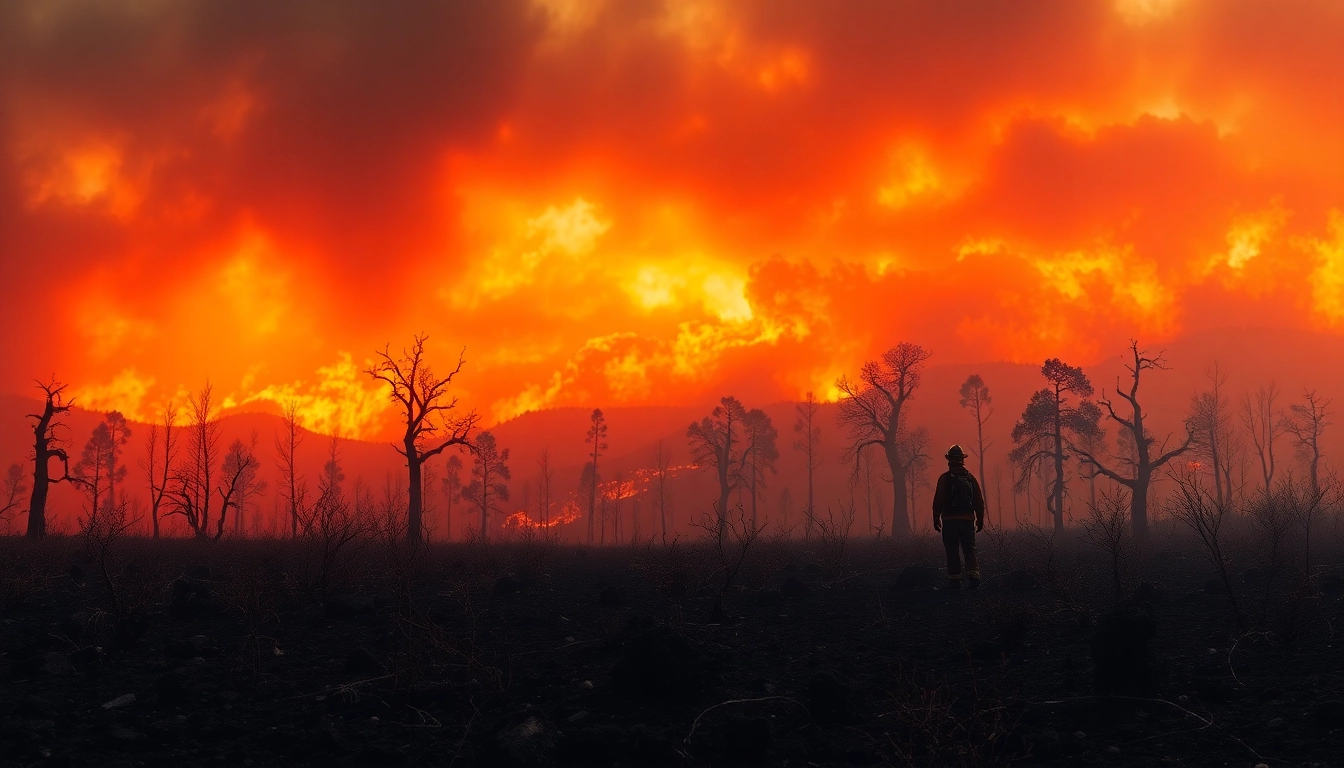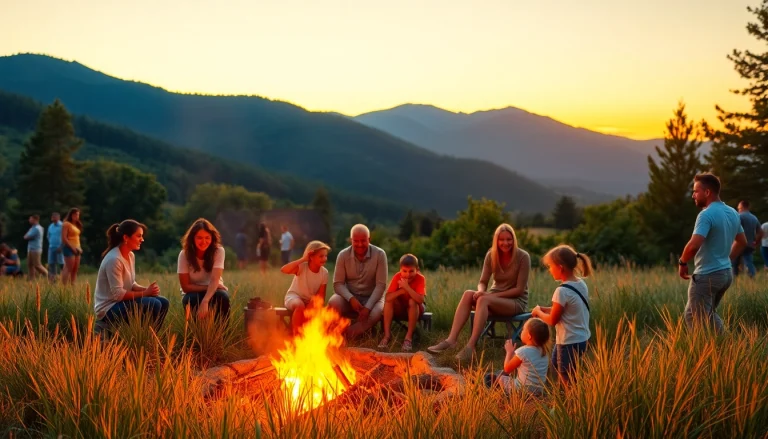Introduction to Wildfire Events
Wildfires are a natural phenomenon that can have devastating effects on ecosystems, communities, and economies. As climate patterns change and human activities alter landscapes, understanding wildfire events has become increasingly critical. Events related to wildfires can encompass a wide variety of occurrences, from controlled burns aimed at prevention to catastrophic wildfires that can devastate communities. Especially in regions prone to wildfires, educational initiatives and preparedness planning are essential. This article delves into the intricacies of wildfire events, exploring their definitions, causes, impacts, prevention strategies, and future trends.
Definition and Types of Wildfires
Wildfires can be classified into several types, primarily based on their origins and the environments they affect. Understanding these classifications aids in developing strategies for prevention and control.
- Surface Fires: These fires occur on the ground, burning through grass, shrubs, and debris. They are generally less intense and can play a natural role in ecosystem health.
- Crown Fires: These fires spread through the tops of trees and can be highly destructive due to their intense heat and speed. They are often driven by strong winds and can jump between tree crowns.
- Ground Fires: Occurring beneath the surface, these fires burn organic material in the soil and can smolder for long periods. They can reignite surface fires and are particularly challenging to extinguish.
Recognizing the type of wildfire is crucial for developing appropriate firefighting strategies and for the management of forest firefighting resources.
The Ecological Role of Wildfires
While wildfires may seem catastrophic, they play a necessary role in many ecosystems. Fire can contribute to forest health by:
- Promoting new growth by clearing out old and diseased vegetation.
- Recycling nutrients back into the soil, thus enhancing plant growth.
- Creating diverse habitats by impacting species composition and structure.
Therefore, properly managed wildfires can foster biodiversity and sustain healthy ecosystems. Understanding the ecological role of wildfires informs the strategies used to manage fire-prone areas effectively.
Overview of Current Wildfire Trends
The frequency and intensity of wildfires have surged over recent years, attributed mainly to climate change, urban expansion into wildland areas, and forest management practices. Areas previously considered safe are now experiencing unprecedented fire activity, changing the dynamics of regional fire management strategies. Additionally, the incidence of wildfires during periods of high winds and drought has made them more destructive.
Assessing current wildfire trends highlights the urgency for communities to adapt to changing conditions, increasing their resilience against potential fire threats.
Causes of Wildfire Events
Natural Ignition Sources
Natural events such as lightning strikes often serve as ignition factors for wildfires. Studies have shown that approximately 50% of wildfires are ignited by lightning. These natural fires can sometimes be beneficial, sparking regeneration in ecosystems, but when exacerbated by drought conditions, they can grow rapidly out of control.
Human Contributions to Wildfire Risks
Human activities represent a significant factor in the occurrence of wildfires. Poor land management, campfires left unattended, arson, and even equipment use can inadvertently ignite wildfires. With the increasing case of human-made ignitions, communities must prioritize education and prevention efforts.
In addition, urban sprawl into wilderness areas has heightened wildfire risks. This creates the “wildland-urban interface” where human habitation meets wildland vegetation, necessitating efforts to educate citizens on fire-safe practices within these zones.
Climate Change and Wildfire Frequency
The relationship between climate change and wildfires is a critical area of study. Rising global temperatures have led to prolonged droughts in some regions, increasing the quantity of dry fuel available for wildfires. Moreover, shifts in precipitation patterns can dry out vegetation, making it more susceptible to ignition.
As climate conditions continue to evolve, models predict an escalation in wildfires across the globe. Addressing these issues effectively requires comprehensive monitoring of climate impacts and a coordinated response to mitigate risks.
Impact of Wildfire Events on Communities
Economic Consequences of Wildfires
The economic toll of wildfires can be staggering, affecting everything from local economies to national infrastructure. Direct costs include firefighting expenses, property damage, and loss of timber resources. In the long term, areas affected by wildfires may see drops in tourism, home values, and workforce displacement.
For example, during the 2020 California wildfires, the total estimated damages exceeded $10 billion, showcasing the profound financial implications of such disasters. Therefore, it becomes crucial for communities to invest in risk assessment strategies to minimize economic impacts.
Health Risks Associated with Wildfire Smoke
Wildfire smoke poses significant health risks, including respiratory issues and cardiovascular problems, especially for vulnerable populations. The fine particulate matter released during wildfires can travel long distances, affecting air quality far from the source of the fire.
Communities need to implement early warning systems and provide resources for residents, such as air purifiers and recommendations for protective measures during high smoke days, ensuring public health is prioritized.
Environmental Effects and Recovery
The environmental effects of wildfires are noticeable and can linger long after flames subside. Soil erosion, water quality degradation, and habitat loss can lead to long-term ecological damage. Recovery efforts may include reforestation programs, the establishment of firewise communities, and habitat restoration initiatives.
Implementing successful rehabilitation strategies is essential not just for restoring landscapes but also for supporting biodiversity that can be at risk due to altered ecosystems following wildfires.
Prevention Strategies for Wildfire Events
Community Preparedness and Education
Community education is vital in reducing risks associated with wildfires. Awareness programs can inform residents about safe practices, emergency protocols, and how to create defensible space around their properties. Community fire drills, partnerships with fire departments, and local engagement can significantly enhance preparedness.
Additionally, local governments can foster interest by creating community wildfire protection plans that engage citizens in proactive discussions regarding fire safety and preparedness.
Fire Management and Mitigation Practices
Effective fire management practices are crucial for preventing destructive wildfires. This includes controlled burns, where prescribed fires are intentionally ignited under specific conditions to reduce fuel loads. Forest thinning and other vegetation management methods can also create barriers to the spread of fires.
Collaboration with fire management agencies and investment in technology for fire detection and monitoring enhances the effectiveness of these strategies, enabling quicker responses to fire risks.
Government Policies and Support
Government intervention plays a critical role in wildfire management. Adequate funding for firefighting resources, legislative actions for land use planning, and the integration of wildfire risk considerations into development codes are essential. For instance, the implementation of stricter building codes in fire-prone areas can help mitigate fire danger.
Moreover, policies focused on restoring ecosystems, investing in public education, and utilizing advanced technology for risk assessment can significantly enhance community resilience against wildfires.
Future Trends in Wildfire Events
Technological Innovations in Fire Detection
Emerging technologies are poised to revolutionize how wildfires are detected and managed. Remote sensing, drones equipped with thermal imaging, and AI-powered analytics can provide real-time data on fire behavior and spread, allowing for more efficient resource allocation and firefighting strategies.
As technology continues to evolve, its integration within fire management practices can lead to improved predictive capabilities and ultimately save lives and resources.
Data-Driven Approaches to Fire Management
Data analytics plays an increasingly important role in understanding wildfire risk patterns and behavior. By harnessing big data and predictive modeling, fire management agencies can identify high-risk zones, optimize resource deployment, and anticipate fire outbreaks with greater accuracy.
Incorporating analytics into community wildfire protection strategies not only aids immediate response efforts but also informs long-term planning and risk mitigation.
Collaboration Across Agencies and Communities
The complexity of wildfire management necessitates collaboration between multiple agencies, communities, and stakeholders. Forming partnerships fosters knowledge sharing, aligns resources, and creates a unified front in combating wildfire risks. For example, joint training exercises between federal and local agencies can improve response coordination during wildfire events.
Such collaborative efforts not only enhance preparedness but also strengthen community engagement, making wildfire risk management a communal responsibility.








